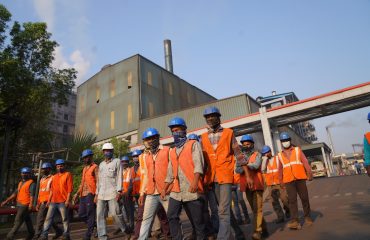The scrap metal market, a vital cog in the global recycling machine, is a dynamic and complex landscape. Fluctuating prices, evolving technological advancements, and global economic conditions all play a significant role in shaping its trajectory. This comprehensive guide delves into the key aspects of this fascinating industry, providing insights for businesses, investors, and anyone interested in understanding the intricacies of scrap metal trading.
Understanding the Types of Scrap Metal and Their Value
The scrap metal market is broadly categorized into ferrous and non-ferrous metals. Ferrous metals, primarily iron and steel, constitute the largest portion of the market. Their value is heavily influenced by steel production levels globally. Factors like construction activity, automotive manufacturing, and infrastructure development directly impact the demand for ferrous scrap. Common ferrous scrap includes steel from appliances, cars, and industrial machinery.
Non-ferrous metals, on the other hand, encompass a wider range of materials, including aluminum, copper, brass, and zinc. These metals often command higher prices due to their specialized applications in electronics, aerospace, and other high-tech industries. The value of non-ferrous scrap is influenced by the global demand for these metals in various sectors. For example, the growth of electric vehicles significantly impacts the demand and price of copper and aluminum.
The grade and purity of the scrap metal also significantly affect its value. Clean, sorted scrap commands higher prices compared to contaminated or mixed scrap. This highlights the importance of proper sorting and processing techniques in maximizing the value of scrap metal.
Global Economic Factors Influencing Scrap Metal Prices
The scrap metal market is intrinsically linked to the global economy. Economic downturns often lead to reduced industrial activity, resulting in lower demand for scrap metal and consequently lower prices. Conversely, periods of economic growth usually translate into increased industrial production and higher demand, driving up scrap metal prices. Factors like inflation, interest rates, and currency fluctuations can also significantly impact the market.
International trade policies and tariffs also play a critical role. Import and export restrictions can affect the supply and demand dynamics of specific metals, leading to price volatility. For instance, changes in trade relations between major steel-producing countries can significantly impact the price of ferrous scrap.
Technological Advancements and Their Impact on Scrap Metal Recycling
Technological advancements are transforming the scrap metal recycling industry. Improved sorting technologies, automated processing plants, and advanced metal analysis techniques are enhancing efficiency and improving the quality of recycled metal. This leads to higher recovery rates and better-quality recycled materials, making them more competitive with virgin metals.
The development of new alloys and composite materials also presents both challenges and opportunities. While the recycling of some advanced materials can be complex and costly, the potential for recovering valuable metals from these materials is driving innovation in recycling technologies.
The Role of Government Regulations and Environmental Concerns
Government regulations play a significant role in shaping the scrap metal industry. Environmental regulations aimed at promoting sustainable practices and reducing pollution are becoming increasingly stringent. These regulations often mandate specific processing methods, waste management practices, and emission standards for scrap metal facilities.
Growing environmental awareness among consumers and businesses is also driving demand for recycled materials. The use of recycled scrap metal is often seen as a more sustainable alternative to using virgin materials, reducing the environmental impact of manufacturing processes. This increased demand contributes to a more stable and potentially higher-valued scrap metal market.
Future Trends and Predictions in the Scrap Metal Market
The future of the scrap metal market appears promising, driven by several factors. The increasing global population and urbanization are leading to a higher demand for construction materials, boosting the demand for ferrous scrap. The transition towards a more sustainable and circular economy is also driving the adoption of recycled materials, increasing the value of scrap metal.
Technological advancements will continue to play a crucial role in shaping the industry. The development of more efficient and cost-effective recycling technologies will enhance the recovery rate of valuable metals and further solidify the position of scrap metal in the global materials market. The growing focus on renewable energy sources also presents opportunities, as the manufacturing of wind turbines and solar panels utilizes significant quantities of various metals, ultimately increasing the demand for scrap metal in the long term.
Understanding the intricacies of the scrap metal market requires a keen eye on global economic trends, technological advancements, and environmental regulations. By staying informed about these factors, businesses and investors can navigate the complexities of this dynamic industry and capitalize on its potential.
Tags: scrap metal, scrap metal market, metal prices, recycling, ferrous metals, non-ferrous metals




